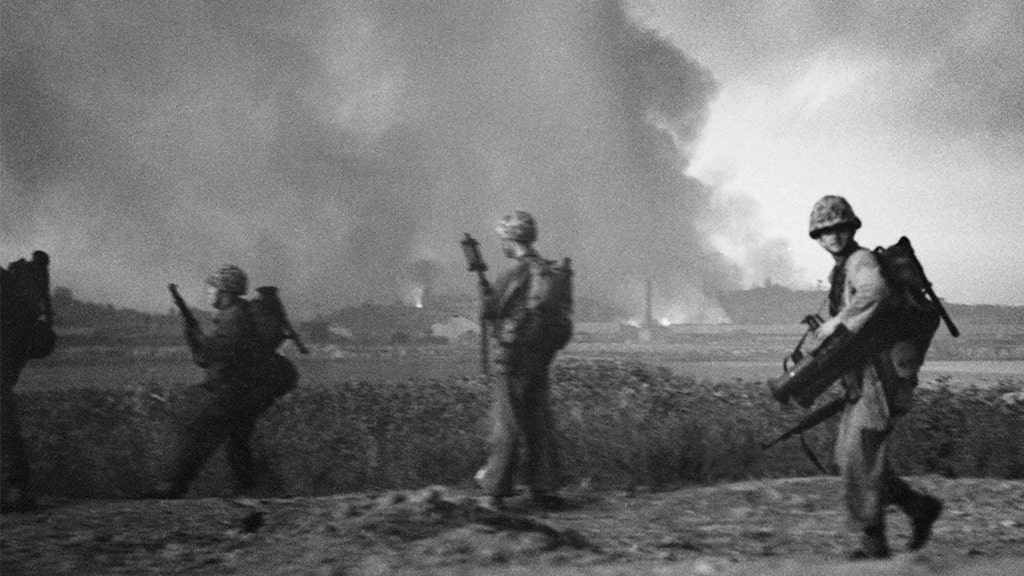The chosen date, September 15, 1950, stands as a seminal moment in the annals of military history. Designated as the day when U.S. Marines executed a daring amphibious assault at Inchon on the western coast of Korea, this operation was anything but routine. In the context of the Korean War, which erupted on June 25, 1950, with North Korea’s invasion of South Korea, the landing at Inchon marked a pivotal turning point in a conflict that had already seen significant bloodshed and territorial changes. General Douglas MacArthur, appointed Supreme Commander of United Nations (U.N.) forces just two months prior, played a crucial role in orchestrating this risky maneuver, despite the substantial doubts expressed by military advisors regarding its feasibility and potential risks.
The location of Inchon was particularly strategic. Situated approximately 100 miles south of the 38th parallel and merely 25 miles from Seoul, the South Korean capital, Inchon provided a unique opportunity to potentially cut North Korean forces in half. MacArthur’s conviction and audacity became the cornerstones of the operation’s planning, which involved an intricate coordination of naval, aerial, and ground forces. In the early hours of the assault, U.S. Marines faced moderate resistance but swiftly secured the beachhead, marking the beginning of a counteroffensive that would significantly alter the trajectory of the Korean War.
The impact of the Inchon landing was monumental. As noted by historical sources, it effectively fragmented North Korean military forces, allowing U.N. forces to push inland and reclaim Seoul, which had succumbed to communist control a few months earlier. The precision and scale of the operation, described by military analysts as “epic” and “audacious,” revealed the potential for U.N. operations to regain lost territory through aggressive tactics. The ensuing battle saw allied forces converge from both northern and southern directions, leading to extensive devastation of the North Korean army and the capture of around 125,000 enemy soldiers.
Operation Chromite, as the Inchon landing was officially termed, not only shifted momentum in the Korean conflict but also reaffirmed a broader strategy involving naval power projection. Articles from military institutions and historians have noted this operation as a pivotal moment that marked the U.S. Navy and Marine Corps’ resurgence during the Cold War period. The highly coordinated amphibious assault brought an end to discussions that had previously dominated military thought regarding reliance solely on aerial bombing capabilities. As MacArthur famously asserted, “The Navy has never let me down in the past and it will not let me down this time,” emphasizing his faith in naval power to dictate the success of ground troops.
Moreover, MacArthur envisioned this operation as a method to confound enemy positions, taking advantage of what he believed would be the North Korean military’s underestimation of the chosen landing site. The general’s strategies involved a bold incursion into enemy territory that would disrupt supply lines and communication between North Korean forces, providing U.N. troops with a tactical leverage that had hitherto been absent in the conflict. This strategic ingenuity not only offered a respite against an impending winter campaign but also revitalized the morale of U.N. forces and their South Korean allies.
In retrospect, the Inchon landing serves as a testament to the critical role of leadership, audacity, and strategic insight in military operations. It exemplified the effective execution of complex military maneuvers in the face of skepticism and considerable risk. MacArthur’s determination to execute the Inchon operation ultimately shifted the course of the Korean War, preserving South Korea’s independence and altering the dynamics of Cold War confrontations in the region. The successful landing at Inchon is therefore not merely a historical event but an emblem of what decisive military action can achieve against seemingly insurmountable odds. The consequences of this operation echoed through history, influencing military tactics and the significance of naval capabilities in conflict long beyond the Korean War itself.



